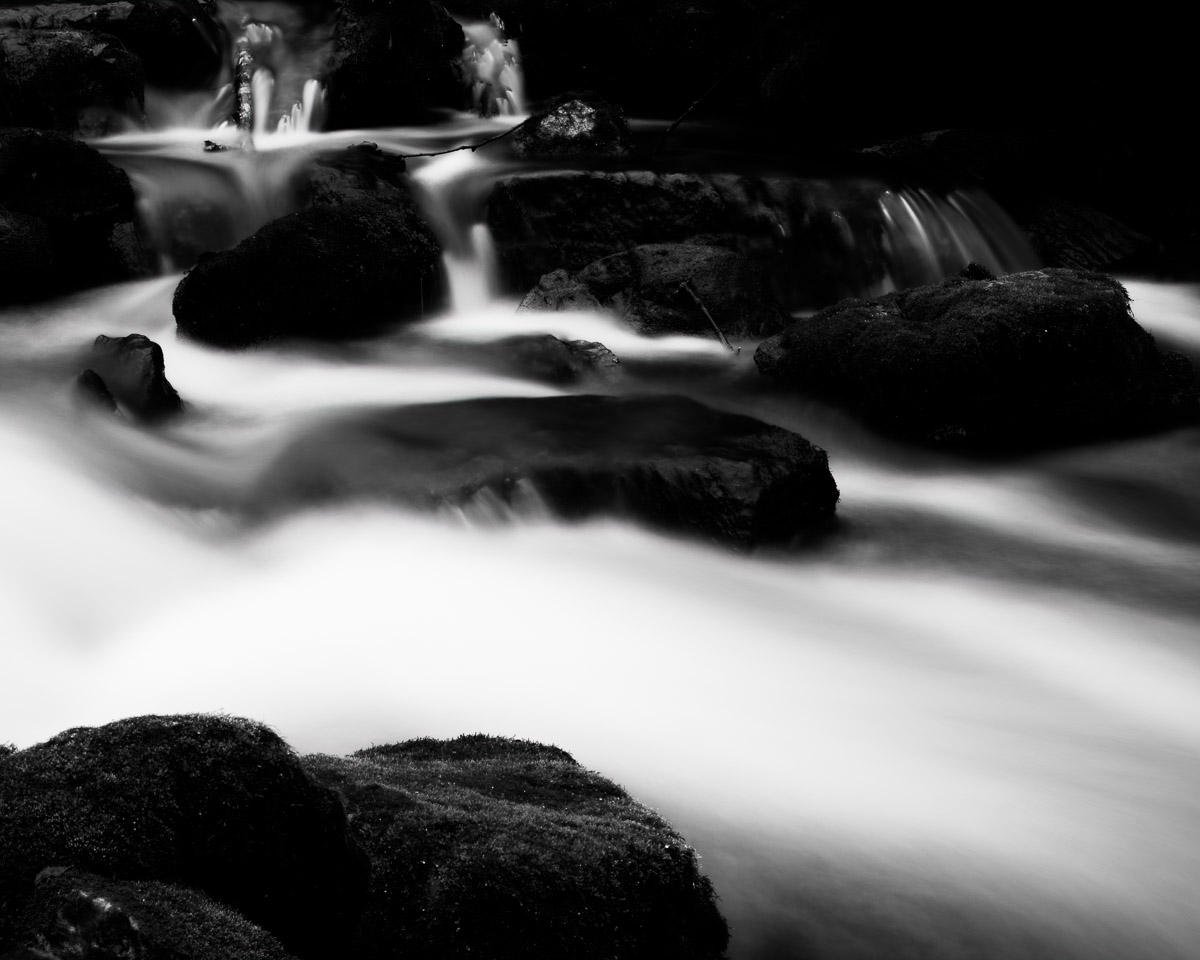I captured this image on a trip to Blanchard Springs nearly three years ago. What had caught my attention at the time was the way the water flowed around the rocks in the creek. I processed and reprocessed the image trying to emphasize that flow, but I could never achieve what I was looking to achieve. The results were OK at best, but they just didn’t accomplish what I envisioned. So, it has sat on my computer collecting “digital dust” ever since.
Then, the other day, I stumbled across it again, and I started to dabble with it again. But, once again, nothing I did would emphasize the water the way I wanted. I began asking myself what else I could do. I knew there was a nice picture hiding there somewhere; I just couldn’t find it.
I sat there for a few minutes staring at the image on my screen when I suddenly realized what had always bothered me: the green, moss-covered rocks that were competing with the flowing water for attention. Now, knowing what the problem was, I needed to figure out how to solve it. My solution was to convert the image to black and white.
In many instances, a black and white photograph benefits when there is a good degree of contrast between the highlights and shadows. Without this contrast, everything will tend to blend together, and the picture will look flat. So, I made several adjustments to enhance the contrast between the water and the rocks.
To further fine tune the contrast, I used a combination of Lightroom’s adjustment brush and range mask feature to further darken the rocks and increase the brightness of the water.
I wanted a slightly softer look for the final photograph. I accomplished this by reducing the overall texture and clarity of the image.
Finally, the edges of the frame contained some elements that seemed a bit intrusive and distracting, and they really didn’t fit in with what I envisioned. So, I cropped the photograph into a 4:5 ratio and moved the crop into the position I needed to eliminate the unwanted elements until I got to this final image.
